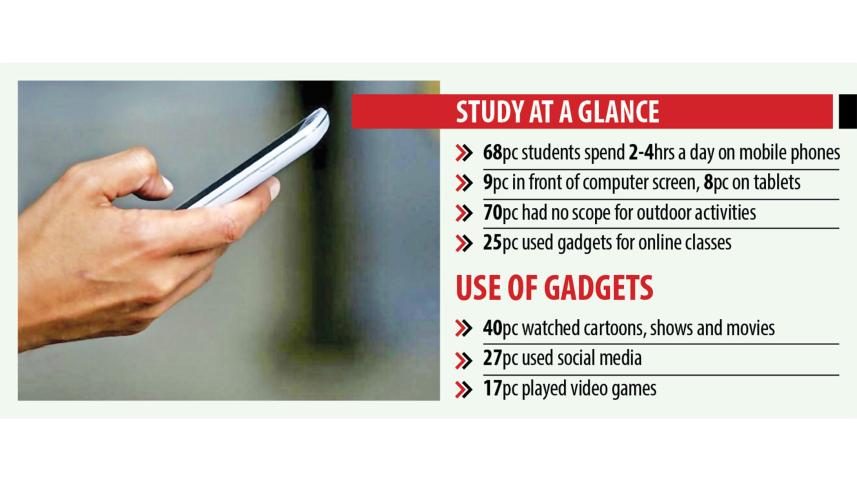Students’ over-dependence on gadgets must be checked

Arecent study on the prevalence of electronic gadgets among students and its impact on their health, jointly conducted by researchers of various universities in the country, has found that secondary level students became overly dependent on electronic gadgets during the past year and a half of the pandemic. According to the study, 68 percent of secondary level students pass two to four hours a day on their mobile phones, nine percent spend a similar amount of time in front of a computer, while eight percent do so on tablets. This excessive dependence on electronic devices has led to many of them suffering from a whole new range of physical and mental illnesses—they were found to be suffering from backaches, visual disturbances, insomnia and depression, among other health issues.
Students' excessive association with electronic gadgets has, therefore, become a major cause of concern for parents and guardians. After in-person classes stopped when the pandemic broke out in early 2020, students, particularly in urban areas, had very little chance to go outside of their homes. Being unable to meet their friends in schools, they became dependent on phones to communicate with them through social media and apps, in addition to using them for study purposes. What made this situation worse is the lack of opportunity to play outdoors.
For many students, there were not enough space inside the house to do any kind of physical activities such as sports. As the above study revealed, 70 percent of students had no scope for physical activities outside their houses, while 50 percent did not even have the opportunity to carry out physical activities indoors. Naturally, children got dependent on electronic devices for education, entertainment, and communication with their friends.
Now that most schools have started in-person classes and other regular activities—although at limited capacity—it's time for the teachers and education administrators to address the physical and mental health problems facing the students. Needless to say, students should be engaged more in sports and other physical activities in school besides classes. Parents should also consider giving their children more time and engage them in creative activities such as drawing and crafting, so they do not get addicted to the screen. With help at both school and home, we hope students will get over the problem of screen addiction.



 For all latest news, follow The Daily Star's Google News channel.
For all latest news, follow The Daily Star's Google News channel.
Comments